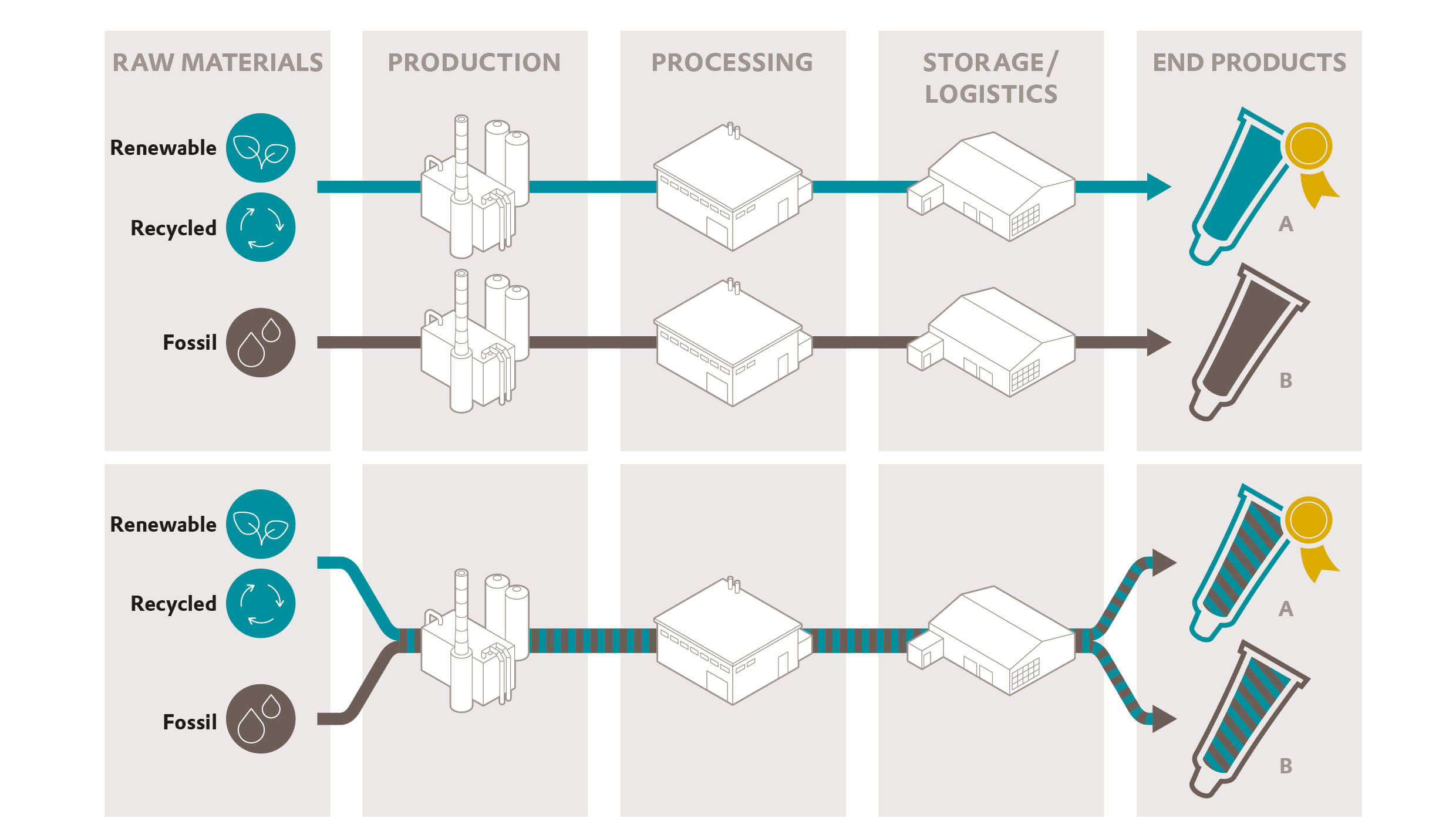Evonik facilities in Marl and Antwerp have had ISCC PLUS certification since November 2021. They are part of the Performance Intermediates business line, whose products include plasticizers, additives, and intermediates for everything from detergents to shoe soles—around two million tons per year. The most important raw material for these products is called crack-C4. Its molecules, which contain four carbon atoms, are created when crude oil products are cracked. In the future, plans call for more and more of these molecules to be supplied by renewable residue materials from refineries. Whether it’s butadiene for rubber applications or butene for plastics, these substances can be extracted from renewable or recycled sources—and they will be chemically identical to the compounds made from scratch. This is confirmed by the mass balance approach. “Certification according to ISCC PLUS enables us to increase the proportion of sustainable products in line with availability and demand,” says Hendrik Rasch, who is responsible for Business & Sustainability Transformation at the business line. Demand for certified products of this kind is also increasing within the company itself. For example, butadiene and butene are processed in the Coating & Adhesive Resins business line. The first eCO product made of a defossilized cracker product is already on the market: VESTOPLAST® eCO is processed in the hot-melt adhesives—or hotmelts, in technical jargon—that hold baby diapers together, for example. In this case, reliable adhesion is a must, and people are increasingly demanding sustainability as well. “Today the millennials have kids in diapers, and they’re watching out for eco-labels,” says Dr. Sabrina Mondrzyk, the head of Technical Marketing for Hotmelts. Adhesion is also important in the production of furniture, beverage cartons, and automobiles. And companies such as IKEA are demanding that recycling products be used even for adhesives. “Nonetheless, no company is making compromises when it comes to adhesion performance and processing,” says Mondrzyk. VESTOPLAST® eCO is chemically identical to the conventional variant, but in terms of the mass balance approach 97 percent of it is based on renewable raw materials.







